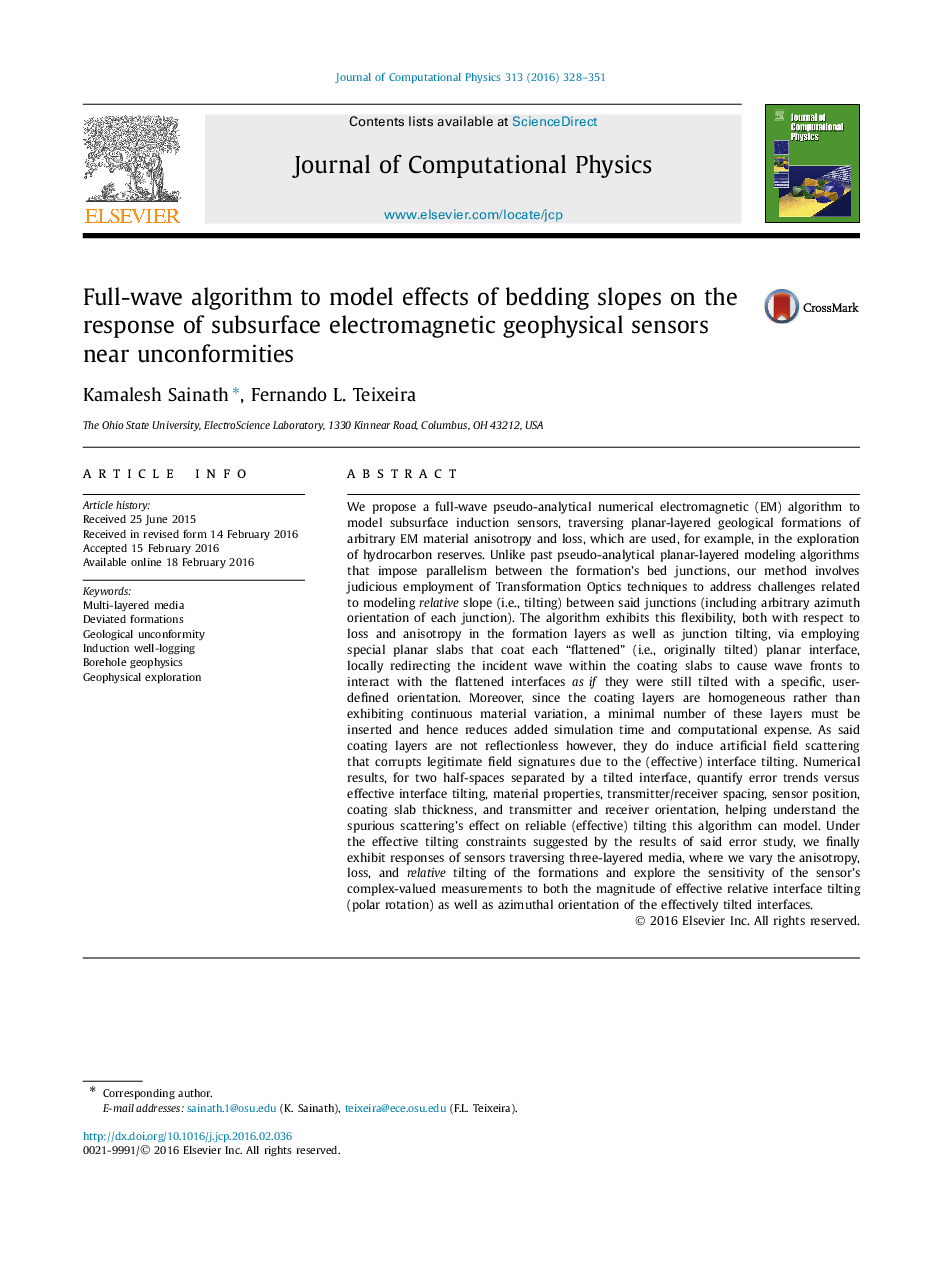| کد مقاله | کد نشریه | سال انتشار | مقاله انگلیسی | نسخه تمام متن |
|---|---|---|---|---|
| 519566 | 867672 | 2016 | 24 صفحه PDF | دانلود رایگان |
عنوان انگلیسی مقاله ISI
Full-wave algorithm to model effects of bedding slopes on the response of subsurface electromagnetic geophysical sensors near unconformities
ترجمه فارسی عنوان
الگوریتم موج کامل برای مدل سازی اثرات دامنه های بستر در پاسخ سنسورهای ژئوفیزیکی الکترومغناطیسی زیر سطحی در نزدیکی عدم انطباق
دانلود مقاله + سفارش ترجمه
دانلود مقاله ISI انگلیسی
رایگان برای ایرانیان
کلمات کلیدی
رسانه چند لایه شکلات های نابجا، عدم انطباق زمین شناسی، لجستیک القایی، ژئوفیزیک خلیج، اکتشاف ژئوفیزیک،
موضوعات مرتبط
مهندسی و علوم پایه
مهندسی کامپیوتر
نرم افزارهای علوم کامپیوتر
چکیده انگلیسی
We propose a full-wave pseudo-analytical numerical electromagnetic (EM) algorithm to model subsurface induction sensors, traversing planar-layered geological formations of arbitrary EM material anisotropy and loss, which are used, for example, in the exploration of hydrocarbon reserves. Unlike past pseudo-analytical planar-layered modeling algorithms that impose parallelism between the formation's bed junctions, our method involves judicious employment of Transformation Optics techniques to address challenges related to modeling relative slope (i.e., tilting) between said junctions (including arbitrary azimuth orientation of each junction). The algorithm exhibits this flexibility, both with respect to loss and anisotropy in the formation layers as well as junction tilting, via employing special planar slabs that coat each “flattened” (i.e., originally tilted) planar interface, locally redirecting the incident wave within the coating slabs to cause wave fronts to interact with the flattened interfaces as if they were still tilted with a specific, user-defined orientation. Moreover, since the coating layers are homogeneous rather than exhibiting continuous material variation, a minimal number of these layers must be inserted and hence reduces added simulation time and computational expense. As said coating layers are not reflectionless however, they do induce artificial field scattering that corrupts legitimate field signatures due to the (effective) interface tilting. Numerical results, for two half-spaces separated by a tilted interface, quantify error trends versus effective interface tilting, material properties, transmitter/receiver spacing, sensor position, coating slab thickness, and transmitter and receiver orientation, helping understand the spurious scattering's effect on reliable (effective) tilting this algorithm can model. Under the effective tilting constraints suggested by the results of said error study, we finally exhibit responses of sensors traversing three-layered media, where we vary the anisotropy, loss, and relative tilting of the formations and explore the sensitivity of the sensor's complex-valued measurements to both the magnitude of effective relative interface tilting (polar rotation) as well as azimuthal orientation of the effectively tilted interfaces.
ناشر
Database: Elsevier - ScienceDirect (ساینس دایرکت)
Journal: Journal of Computational Physics - Volume 313, 15 May 2016, Pages 328-351
Journal: Journal of Computational Physics - Volume 313, 15 May 2016, Pages 328-351
نویسندگان
Kamalesh Sainath, Fernando L. Teixeira,
